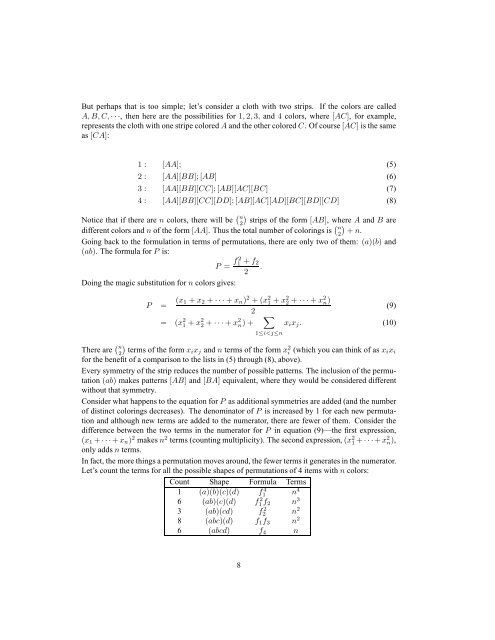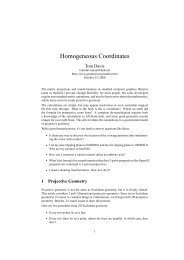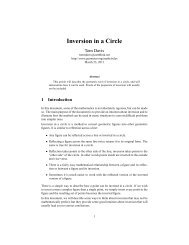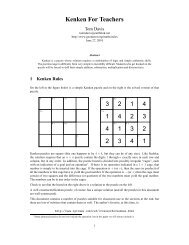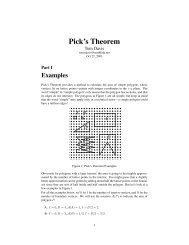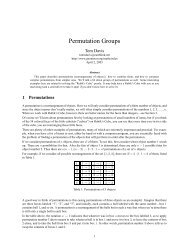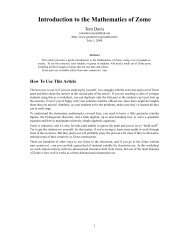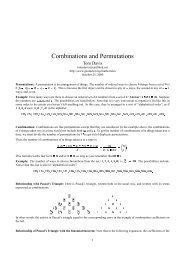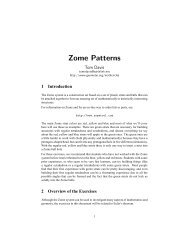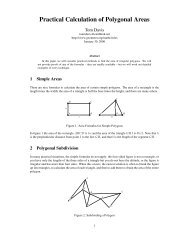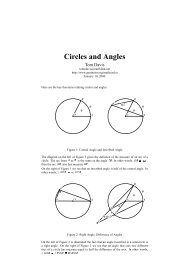P´olya's Counting Theory - Home Page -- Tom Davis
P´olya's Counting Theory - Home Page -- Tom Davis
P´olya's Counting Theory - Home Page -- Tom Davis
Create successful ePaper yourself
Turn your PDF publications into a flip-book with our unique Google optimized e-Paper software.
But perhaps that is too simple; let’s consider a cloth with two strips. If the colors are called<br />
A, B, C, · · ·, then here are the possibilities for 1, 2, 3, and 4 colors, where [AC], for example,<br />
represents the cloth with one stripe colored A and the other colored C. Of course [AC] is the same<br />
as [CA]:<br />
1 : [AA]; (5)<br />
2 : [AA][BB]; [AB] (6)<br />
3 : [AA][BB][CC]; [AB][AC][BC] (7)<br />
4 : [AA][BB][CC][DD]; [AB][AC][AD][BC][BD][CD] (8)<br />
Notice that if there are n colors, there will be ( n<br />
2)<br />
strips of the form [AB], where A and B are<br />
different colors and n of the form [AA]. Thus the total number of colorings is ( n<br />
2)<br />
+ n.<br />
Going back to the formulation in terms of permutations, there are only two of them: (a)(b) and<br />
(ab). The formula for P is:<br />
P = f2 1 + f 2<br />
.<br />
2<br />
Doing the magic substitution for n colors gives:<br />
P = (x 1 + x 2 + · · · + x n ) 2 + (x 2 1 + x 2 2 + · · · + x 2 n)<br />
(9)<br />
2<br />
= (x 2 1 + x2 2 + · · · + x2 n ) + ∑<br />
x i x j . (10)<br />
1≤i


